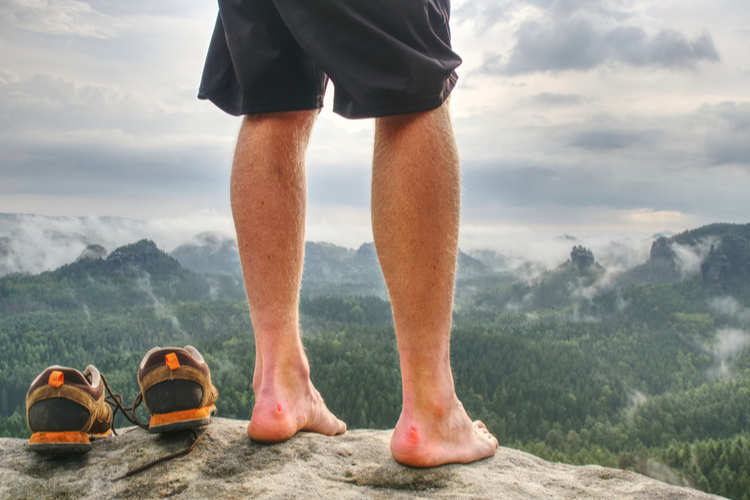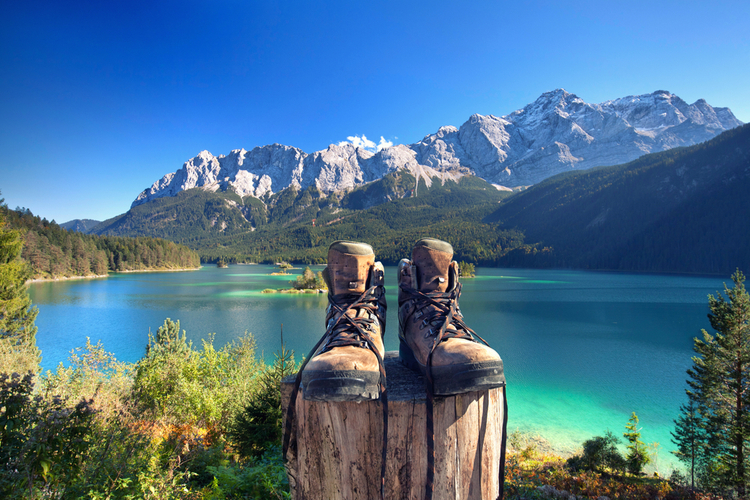
When you buy a pair of hiking boots, you want them to last as long as possible and stand-up to all the terrain you throw them at.
Caring for your boots properly will ensure that they perform better. A little TLC goes a long way with walking and hiking boots.
Although all hiking boots are sturdy and designed to last, exposure to water, dirt, poor weather and constant use can hinder their performance - namely, their ability to last and keep your feet comfortable and dry.
Read on to discover the top tips for caring for your walking boots…
The very first step: Breaking them in
Taking proper care of your hiking boots as soon as you buy them, you need to break them in when you get home. Don’t go straight into the outdoors, we know it’s tempting!
To do this, you’ll need to wear the right socks - ones you’ll use for hiking and walking. Hopefully, you wore these socks when you tried-on and bought your boots.
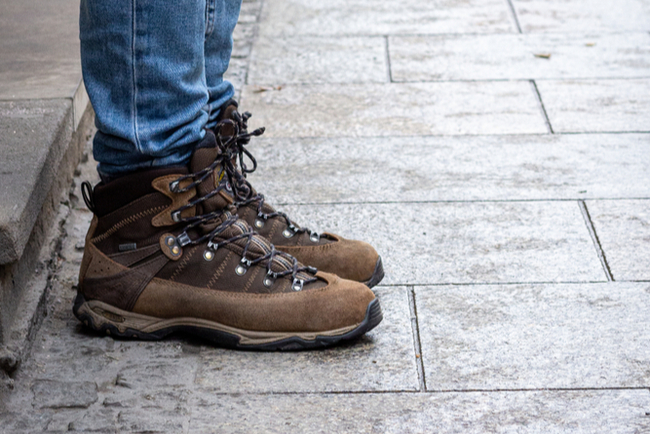
You should treat your new boots like a pair of slippers around your home, for jobs and walking back and forth into different rooms. This is a great way to start building up your comfort and moulding your boot to your foot.
Next, you finally venture outdoors! Start with small walks and gradually go further out. Stroll around the block or to the shops. Your hike will be much more enjoyable if your new boots already have some give in them.
Regular Cleaning
Cleaning your boots is something you’ll have to do, after each hiking trip or even during it, depending on the terrain you’ve traversed.
Dirt in the boot’s sole could mean you have less grip and may lose your footing. However, a build-up of mud on the upper can affect the waterproofing and breathability of your boots.
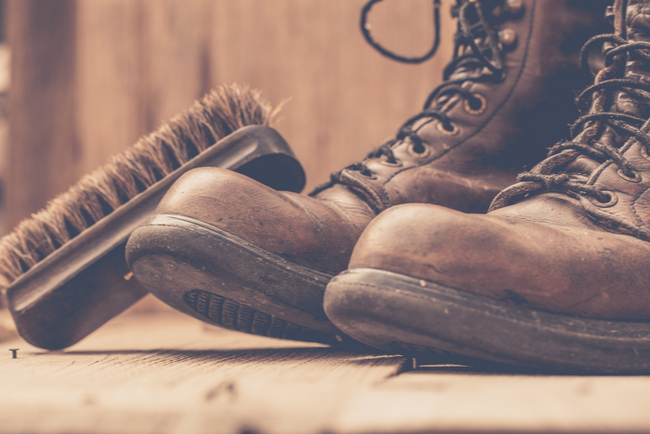
Related: How To Clean Your Walking Boots Or Shoes
You’ll need a soft nylon brush to remove any chunks of mud by lightly scrubbing it away. Be sure to take your laces out first and not to use detergent - warm water first.
Tip: Never dry your boots on or too close to a radiator, this can cause the material to crack and make them unusable. Always let them dry naturally, at a good distance away from any direct heat.
If your sole is covered in mud, scrape it out and use a brush with hard bristles. Then, wipe down the rest of the boot and apply a footwear cleaner before gently scrubbing your boots until they’re clean. Wipe away any remaining cleaner with a cloth.
Proofing & Conditioning
Even after you’ve bought your new hiking boots, you should consider waterproofing them with a specialised product.
Your boots may be waterproof already but using a dedicated proofer will make sure your feet stay dry and boots remain in top condition when met by water.
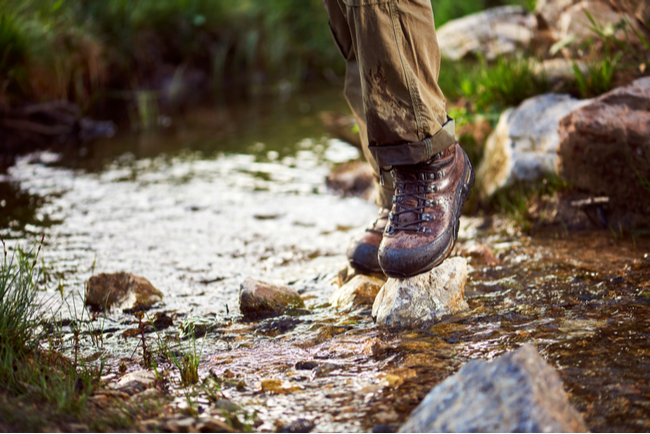
Related: How to reproof a waterproof jacket
There are differences for each type of boot material, including leather, suede and nubuck, and synthetic materials.
Proofing Leather Boots
For full-grain leather hiking boots, allow them to dry before applying a proofing product. A proofing product will condition and waterproof the leather, which prevents it from drying out and cracking - which can cause serious damage.
Products by Granger or Nikwax are effective and easy to apply. You simply rub and buff the wax or conditioner into the leather evenly using a cloth. Make sure to get the conditioner into any cracks in the leather.
Be careful and remember not to smother the upper parts of the boot - over-conditioning the leather can cause it to become too soft and lose its structural support.
Proofing Suede and Nubuck Boots
A product that is water-based, such as Nikwax Nubuck & Suede Proof Spray, will protect the suede upper against weather, maintaining performance and your boots durability.
Nikwax’s Nubuck & Suede Proof will preserve the original texture of the suede and nubuck, so there won’t be any loss in colour or appearance from when you bought them.
When applying, ensure you spray the proofer evenly while your boots are still damp. Leave them to dry naturally for a few minutes to absorb the treatment. If you’ve overdone it, simply wipe off any excess spray.
Proofing Synthetic Boots
Similar to suede and nubuck boots, you should apply a proofer to synthetic hiking boots while they are damp after cleaning - this helps the proofing treatment to soak-in, meaning the waterproofing will last longer.
At Winfields, we have various products for proofing synthetic walking boots, by Granger’s, Kampa, and Nikwax’s Fabric & Leather Proof.
Apply your proofer, if it’s a spray, cover all the creases and cracks and then allow the boots to dry naturally. Make sure you avoid trying to speed the drying by heating your boots under a radiator or with a hairdryer. This can damage the boots by causing materials to crack or adhesives to split and melt.
A handy trick, no matter which material your boots are made of, is to stuff your boots with old newspapers.
Check and Check Again
Every so often, you need to check your boots over for signs of wear or a drop in their overall condition which can impact performance.
Starting from the top, look at your laces and whether any of them are fraying or close to snapping. Check for any loose eyelets or D-rings, this can affect the comfort of your foot and whether you pick up any blisters. Likewise, keep an eye on the upper material for any cracks, this will make your boots less water-resistant.

Related: 5 Signs It’s Time To Replace Your Walking Boots
Moving down the boot, loose soles or stitching anywhere can be serious - you don’t want to lose part of your boot in sticky mud or in a rainstorm! If you think anything is about to break, you’ll need to get it seen to or repaired.
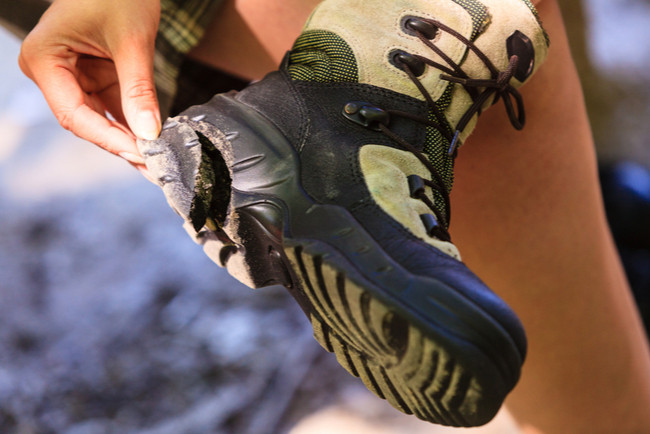
For the outsole, check whether you still have the same amount of grip as when you bought your boots. A lack of grip can be caused by a build-up of mud, which can be cleaned away, or you’ve simply worn them so often! You can get your soles replaced if needs be.
Inside the boot, check your insoles for wear - this can impact comfort, support and keep blisters at bay. You can buy replacement insoles if yours are worn, or you want to enhance the comfort and support from your boot even further. Always check for dirt in your boots, too.
Always store your boots in an airy and dry location, and not in a plastic bag for too long - you don’t want a build-up of odour!
Shop our full range of hiking and walking boots, available in men's, women's and children's.
Read more from the Winfields Outdoors blog for inspiration and gear updates...
The Best Walking Boots for Men, Women & Kids | Walking & Hiking Boots Buying Guide | How To Clean Your Walking Boots Or Shoes









